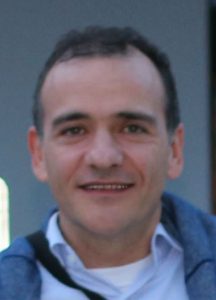Anthony Davison, Institute of Mathematics, Ecole Polytechnique Fédérale de Lausanne, Switzerland
Statistical models for complex extremes

Abstract: Awareness of the importance of risk assessment for complex extreme events has greatly increased in recent times. Leading examples of such events are floods and heatwaves, attributed to global change, and crashes in financial markets, often attributed to mis-estimation or mis-understanding of the dependence between financial actors such as banks. Probability models for univariate events are well-established, and those for multivariate events are in principle well-understood, but useful statistical models and efficient methods of inference in more complex settings are less well developed. This talk will give an overview of some recent work in the area, with an emphasis on environmental applications.
Anthony Davison is Professor of Statistics at the Ecole Polytechnique Fédérale de Lausanne, Switzerland. After obtaining a BA in mathematics at the University of Oxford in 1980, he obtained an MSc (1981) and PhD (1984) in statistics from Imperial College London. Before moving to his current post in 1996 he worked at the University of Texas at Austin, at Imperial College London, and the University of Oxford, where he also held an EPSRC Advanced Research Fellowship. He is a fellow of the American Statistical Association, of the Institute of Mathematical Statistics and of the Royal Statistical Society, and an elected member of the International Statistical Institute. In 2009 he was awarded a laurea honoris causa in statistical science by the University of Padova. His research interests cover a wide range of topics in statistical theory and methods, including statistics of extremes, likelihood theory and resampling methods. Since 2008 he has been editor of Biometrika.

J. Sunil Rao, Division of Biostatistics, Department of Public Health Sciences University of Miami, Florida, USA
Classified Mixed Model Prediction (Canceled, due to Hurricane IRMA)

Abstract: Many practical problems are related to prediction, where the main interest is at subject (e.g., personalized medicine) or (small) sub-population (e.g., small community) level. In such cases, it is possible to make substantial gains in prediction accuracy by identifying a class that a new subject belongs to. This way, the new subject is potentially associated with a random effect corresponding to the same class in the training data, so that method of mixed model prediction can be used to make the best prediction. We propose a new method, called classified mixed model prediction (CMMP), to achieve this goal. We develop CMMP for both prediction of mixed effects and prediction of future observations, and consider different scenarios where there may or may not be a “match” of the new subject among the training-data subjects. Theoretical and empirical studies are carried out to study the properties of CMMP, inluding prediction intervals based on CMMP, and its comparison with existing methods. In particular, we show that, even if the actual match does not exist between the class of the new observations and those of the training data, CMMP still helps in improving prediction accuracy. Two real-data examples are considered – one from an educational survey and the other from a genomic analysis of breast cancer patients. We will also discuss some new extensions of the work that allow it to be applied to a wider range of practical prediction problems. This is joint work with Jiming Jiang of UC Davis, Jie Fan of the University of Miami and Thuan Nguyen of the Oregon Health and Science University.
Roberto Rocci, Dipartimento di Economia e Finanza, Università degli studi di Tor Vergata, Rome, Italy
An URV approach to cluster ordinal data
Abstract: A mixture model to classify ordinal data is discussed. According to the Underlying Response Variable (URV) approach, the observed categorical variables are considered as a discretization of a latent finite mixture of Gaussians. The model is estimated within the expectation maximization (EM) framework maximizing a composite likelihood. This allows us to overcome the computational problems arising in the full maximum likelihood approach due to the evaluation of multidimensional integrals that cannot be written in closed form. Moreover, a method to cluster the observations on the basis of the output of the composite EM algorithm is suggested.
Some extensions of the model are also discussed: the mixed case where some observed variables are continuous and the noise case where the clustering structure is masked by some noise variables/dimensions. In the latter, the noise dimensions are detected considering the variables underlying the ordinal data to be linear combinations of two independent sets of second-order latent variables where only one contains the information about the clustering structure.
The effectiveness of the proposals is shown comparing the composite likelihood approach with the full maximum likelihood and the maximum likelihood for continuous data ignoring the ordinal nature of the variables. The comparison is made on real and simulated data sets. (joint work with Monia Ranalli)
Dr. Roberto Rocci is full professor of Statistics at the Department of Economics and Finance, University of Rome “Tor Vergata”. In 1994, he achieved his PhD in Statistics (Department of Statistical Science and applied probability, “La Sapienza” University of Rome) for work on multilinear models for multiway data. His research areas are cluster analysis, mixture models and latent variables models. He is the author of several papers published on international journals. Recently, he has been the Secretary of the Italian Statistical Society (SIS). Currently, he is associate editor of the Statistical Methods and Applications journal and Board member of SIS-CLADAG (CLassification and Data Analysis Group).


